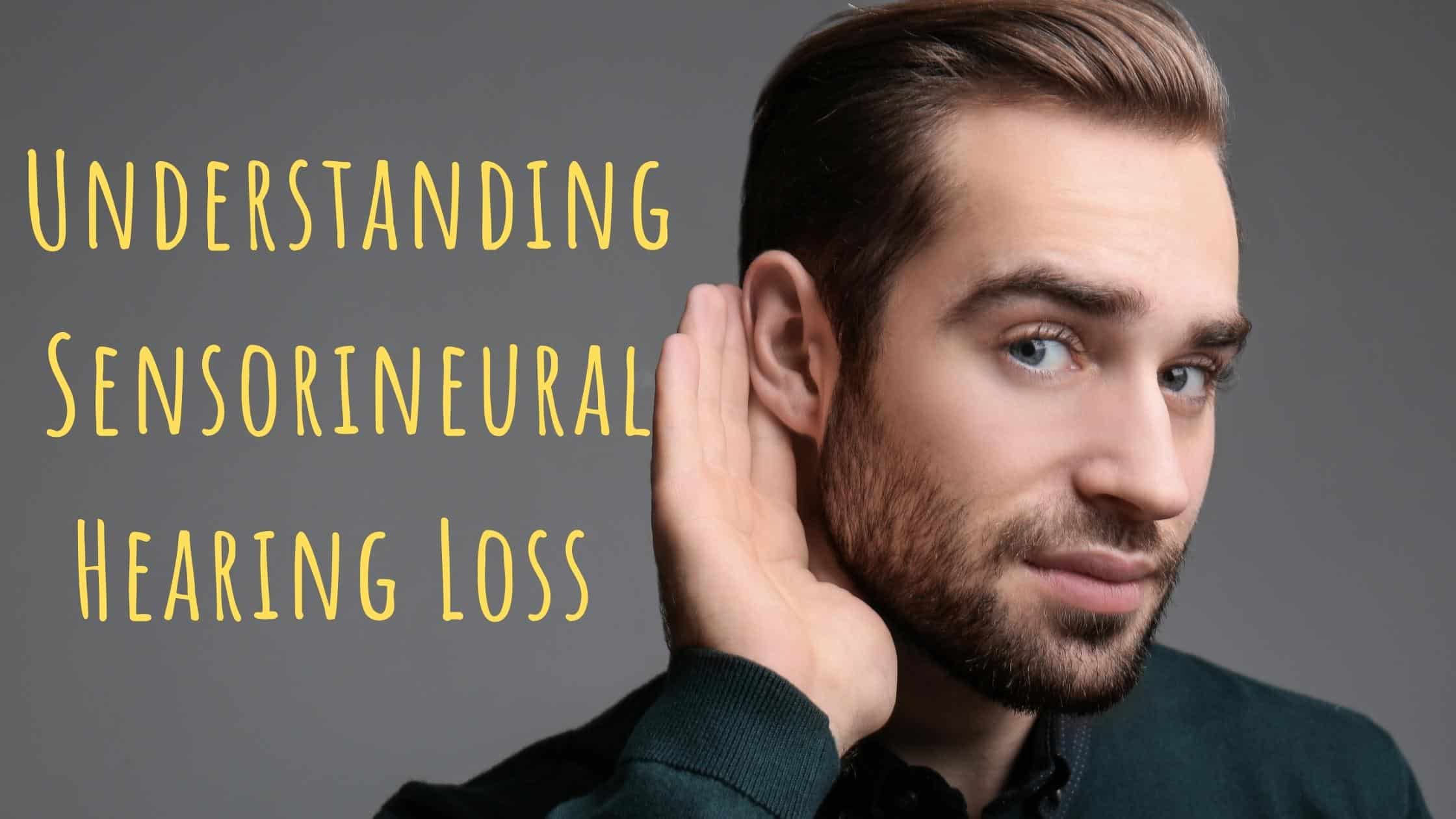
Today in America, about 48 million people have some form of hearing loss. Nine out of ten cases of hearing loss are sensorineural, but what does that mean?
There are two main types of hearing loss: sensorineural and conductive. Some consider there to be a third type, called mixed, which is simply a combination of both types, since it is possible to have both at once.
Conductive Hearing Loss
Briefly, conductive hearing loss is hearing loss that results from some kind of physical obstruction or abnormality in the outer or middle ear. This could range from impacted earwax in the ear canal to malformation of the bones of the middle ear. There are many illnesses, injuries, birth defects or temporary conditions that can cause conductive hearing loss, but the main thing defining conductive hearing loss is that there is some kind of physical problem which prevents sound from traveling efficiently to the inner ear. Frequently, conductive hearing loss will abate when physical conditions change in the ear, or may be corrected with surgery.
Sensorineural Hearing Loss
Sensorineural hearing loss is caused by damage to the inner ear or the auditory nerves. Sensorineural hearing loss, unlike conductive hearing loss, is always permanent. Scientists are still trying to find out all of the potential causes of sensorineural hearing loss, but some commonly accepted ones include:
- Certain illnesses, like some types of cancer
- Ototoxic drugs, chemicals or herbs
- Genetic causes
- Aging
- Head trauma
- Malformation of the inner ear
- Excessive noise exposure
Workings of the Inner Ear
To understand sensorineural hearing loss, it is necessary to understand what happens in our inner ears. From the middle ear, sound enters the cochlea. The cochlea is a snail-shaped organ full of fluid and tiny, hair-like cells called cilia. These cilia are different shapes and sizes, and they each vibrate in sympathy with a particular frequency of sound. Each of their vibrations is registered as an electrical impulse, which is then carried to the brain by the auditory nerves. These are some of the most sensitive parts of the human body, which may be a part of why they are damaged so frequently.
What Does It Sound Like?
Sensorineural hearing loss will make sounds quieter while also lacking in clarity. Sound can seem “muffled.” Often, as with most noise-induced and age-related hearing loss, the hearing loss will progress so slowly that you won’t notice a change at all. Usually, it is someone else who is first to notice that we have hearing loss, when they hear things that we don’t.
Sensorineural hearing loss can also reduce the range of comfortable sounds. What this means is that soft sounds will be too quiet to understand, but louder sounds will be too loud, causing pain or discomfort.
Most sensorineural hearing loss shows up as “high frequency hearing loss,” meaning that one loses the ability to hear sounds that are higher in pitch, where lower sounds might still come through as clearly as they would for a person with normal hearing. However, Meniere’s disease and some other types of hearing loss can cause “broad spectrum hearing loss,” meaning that loss is sustained throughout the audible range of frequencies.
Hidden Hearing Loss
A specific type of sensorineural hearing loss that is common amongst those who have suffered head trauma or exposure to vibration from blasts (such as military personnel) is called “hidden hearing loss.” With hidden hearing loss, a person’s hearing will appear normal when they are given a hearing test, even though they struggle to understand speech and other sounds out in the world. This is because the myelin sheaths surrounding the auditory nerves have been damaged.
Myelin sheaths are a thin, fatty material that surrounds our nerves, keeping neurotransmitters moving along the correct nerve pathway. Damaged myelin sheaths will allow neurotransmitters to “leak” away from the nerve. In the case of hidden hearing loss, when there is a lot of information coming from the ears, leakage will be a problem. When sound is very focused, as in the case of a hearing test, even though some information is leaking away from the nerve, enough makes passage for the sound to be understood by the brain.
Hearing Aids Can Help
Hearing aids are by far the most common and most effective treatment for sensorineural hearing loss. Those who get hearing aids are happy with them at a rate of nearly 95% when asked after one year of wearing them. Hearing aids today are incredibly powerful instruments packed into very small packages. They can help distinguish between speech and background noise, and even assist with spatial location of sounds. Some models claim to restore hearing ability to that of a normal-hearing 20-year-old person!
